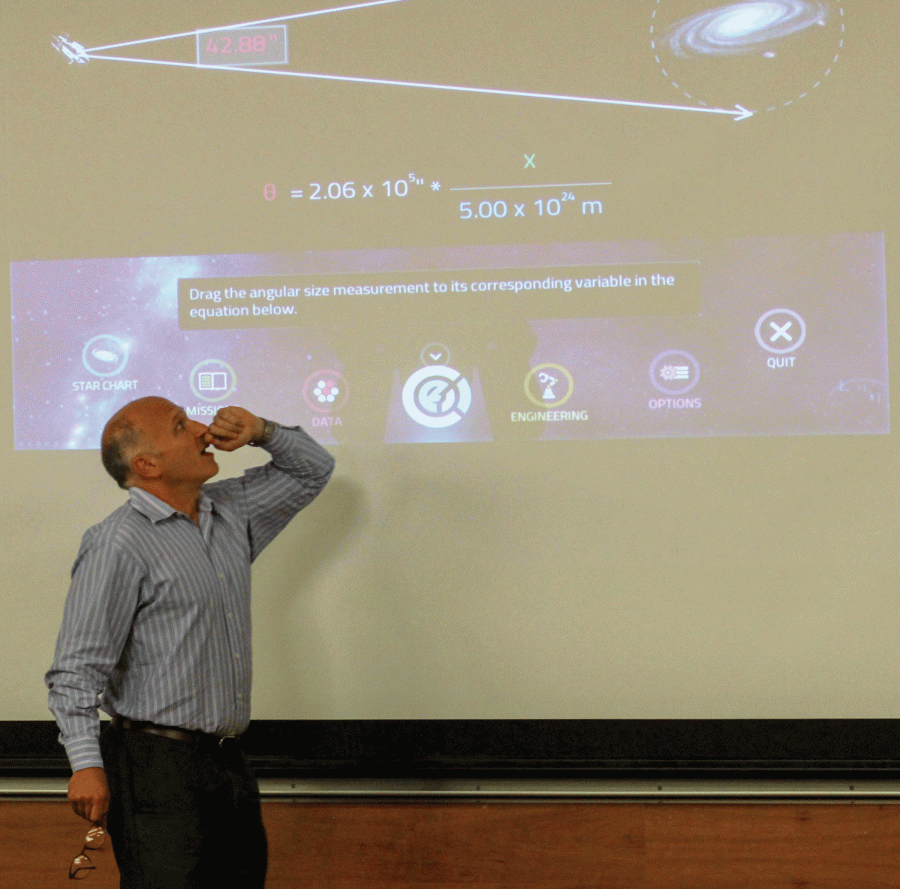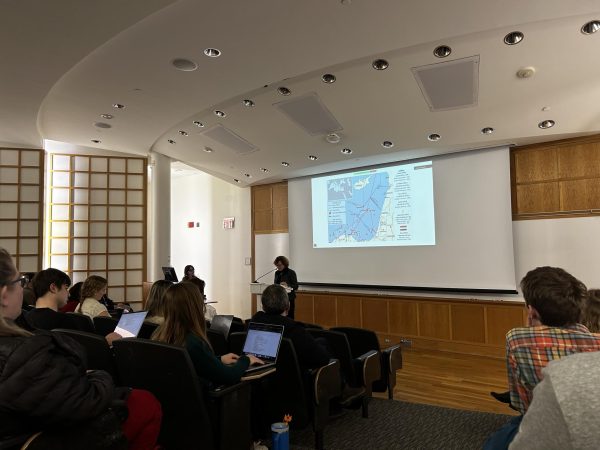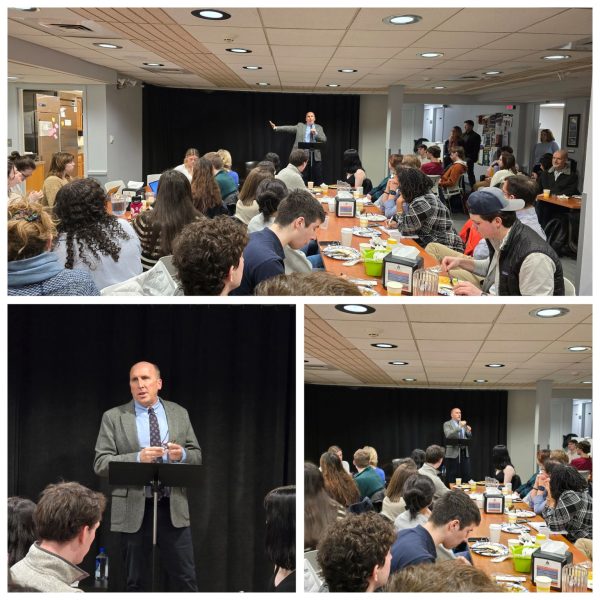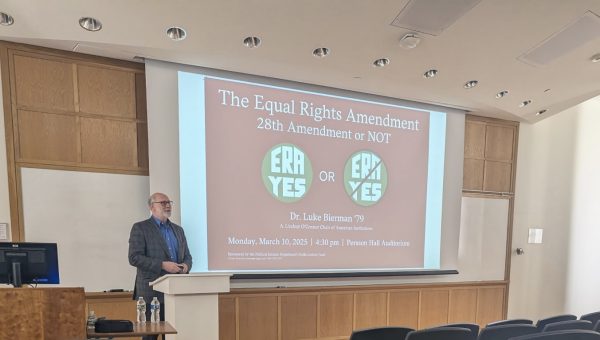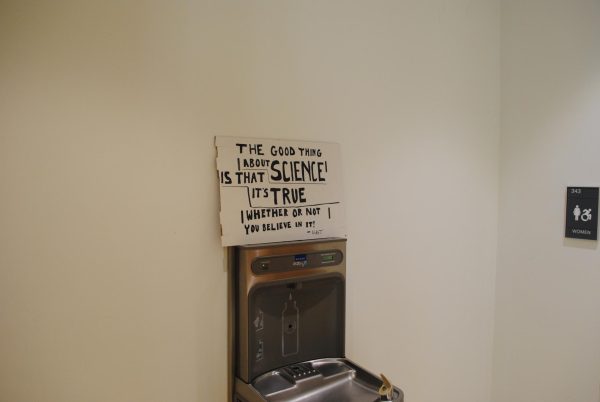Bellinger and Bary Release Award Winning Video Game
On Friday, September 22, Digital Media Editor at W. W. Norton & Company Rob Bellinger and Colgate Associate Professor of Physics and Astronomy Jeff Bary introduced the new learning game “At Play In the Cosmos.” “At Play In the Cosmos” is a game designed as an instructional aid for introductory astronomy students, helping teach core concepts about the elements of the stars through hands-on application. It’s a concept that has been in development for almost a full decade, and after dozens of changes and modifications, it’s finally ready to be presented.
According to the Colgate Campus Distributions’ description of the lecture, “the game was the result of an intense collaboration between game designers and developers and professional astronomers who worked collectively on every aspect of the game from pedagogical considerations to formulating a storyline and the accompanying narration.
“At Play in the Cosmos” can be accessed on both PCs and iOS, and sets the student in the seat of a starship in the distant future, working contracts to mine and navigate at the behest of an enigmatic “Corporation.” The simulations start with a few tutorial missions in which the student is taught how to operate the controls, using a variety of tools to identify the presence of elements within planetary bodies and calculate their densities. After watching this demo during this lecture, students in attendance received iPads and sampled the game themselves.
Bellinger and Bary presented the core problem of having a learning video game, in which the “learning” is at odds with the “video game.” Bellinger explains this as a “Chocolate covered broccoli” because most people want to sit down and forget about thinking when they play a video game. The solution was to not approach the game’s creation as a “balancing act” between learning and fun, but to integrate the two seamlessly. More specifically, mathematical formulas and astronomical elements are woven seamlessly into the game by the aid of a shipboard artificial intelligence, who runs the calculations once the students figured out the proper methodology to use.
For instance, students are prompted to make use of the small angle formula to calculate the details of certain asteroids, in picking the best one to mine for iron. Once the core information has been recorded, the student only needs to move data to its proper location. By moving the data, the result is quickly calculated for them, in which students do not have to remember formulaic details or solve math problems by themselves. In the end, the game emphasizes the act of applying the correct formula for a certain situation and engrossing the student in the breadth of astronomy.
78 percent of students who participated in the playtesting said they’d consider taking another astronomy course, and 81 percent said playing the game made them think more both about astronomy and the actual formulas involved in its use. Bary and Bellinger are firm in their stance that interaction is the key to drawing in students, and judging on what the students involved have to say, they may just be right.
“At Play in the Cosmos” has already begun to receive praise. At the 2017 Games for Change Festival, the game won the “Games for Change/Mashable People’s Choice Award.” In addition, the game was a finalist for the “Games for Change Best Learning Game” Award.
Contact Max Goldenberg at mgoldenberg@colgate.edu.


